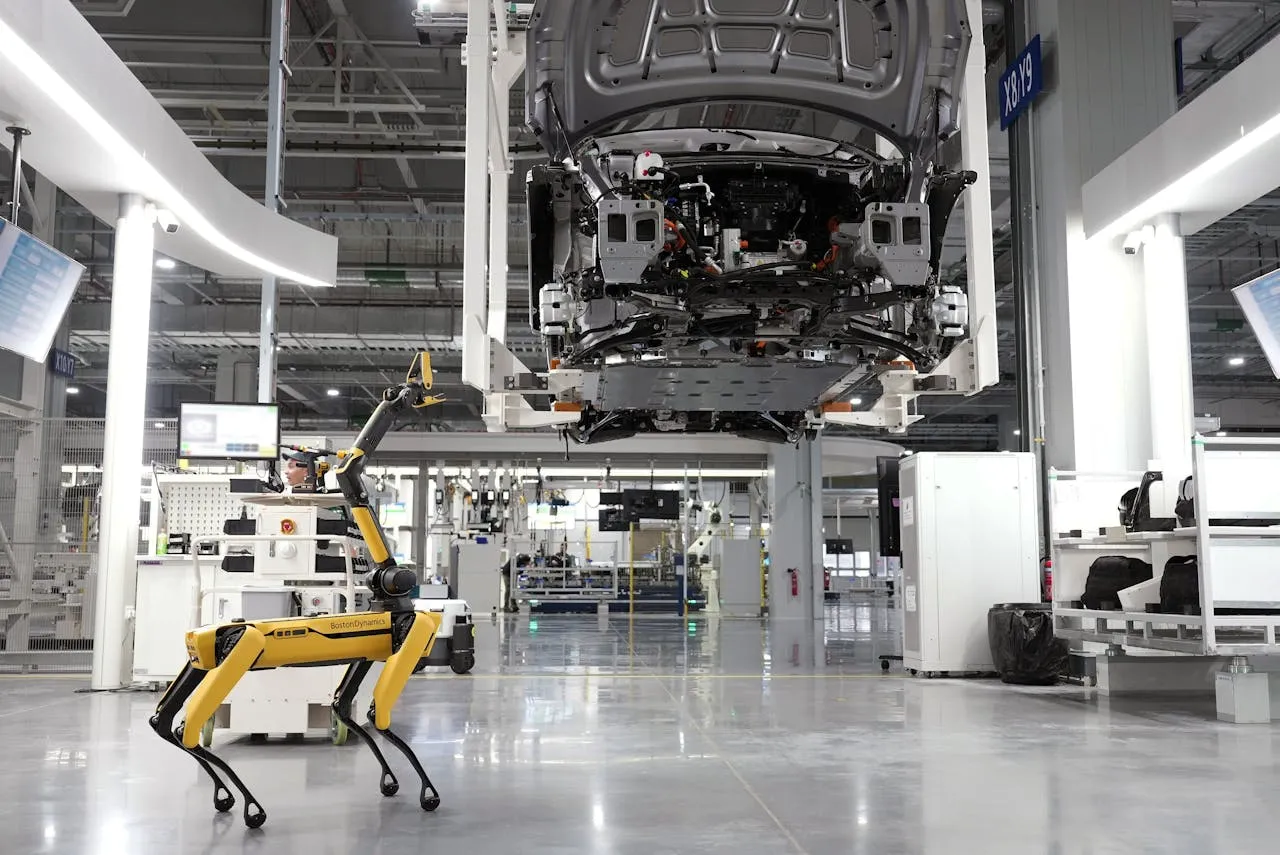Blog
Leveraging Automation & Robotics for Productivity Gains

Canadian manufacturing is undergoing a technological transformation, and automation and robotics are at the core of this change. From automotive assembly to precision machining, factories across the country are investing in manufacturing automation to reduce costs, increase efficiency, and enhance product quality.
For efficiency-focused leaders, integrating industrial robotics and automated production lines isn’t just about replacing manual labour — it’s about unlocking new capabilities and positioning your business for future growth.
1. Why Automation is Reshaping Canadian Manufacturing
The global manufacturing landscape is becoming more competitive, and Canadian producers must contend with:
- Rising Labour Costs – Automation helps offset wage pressures while freeing workers for higher-value tasks.
- Skills Shortages – Robotics fill gaps when skilled operators are scarce.
- Demand for Consistency – Automated systems deliver uniform quality 24/7.
- Pressure for Faster Production – Automation increases throughput without sacrificing quality.
According to a 2024 Deloitte Canada report, 64% of Canadian manufacturers plan to expand automation investments within the next three years.
2. Types of Manufacturing Automation
Automation in Canadian manufacturing can take several forms, each with its own benefits.
a) Fixed Automation
Highly specialized machinery designed for large-volume, high-speed production of a single product. Ideal for automotive and electronics manufacturing.
b) Programmable Automation
Systems that can be reprogrammed for different product batches, offering flexibility for seasonal or custom orders.
c) Flexible (CNC & PLC-Based) Automation
Computer-controlled machinery that adjusts processes quickly, suitable for high-mix, low-volume production.
3. Industrial Robotics Integration
Robotics are no longer limited to large multinational factories. Even small and mid-sized Canadian manufacturers are adopting them thanks to falling costs and greater ease of integration.
Popular Types of Industrial Robots:
- Articulated Robots – Multi-jointed arms ideal for welding, painting, and assembly.
- SCARA Robots – Great for precision pick-and-place operations.
- Collaborative Robots (Cobots) – Work safely alongside humans without extensive safety enclosures.
- AGVs (Automated Guided Vehicles) – Move materials and components without human drivers.
Example: A Manitoba-based metal fabricator reduced production time by 25% after integrating cobots into its welding process.
4. Benefits of Automation & Robotics in Canadian Manufacturing
Increased Productivity
Automated production lines can operate 24/7, delivering significantly higher output.
Improved Quality & Consistency
Precision robotics reduce errors and maintain uniform product quality.
Lower Operating Costs
Reduced waste, less downtime, and optimized energy use lead to major savings over time.
Enhanced Workplace Safety
Automation handles hazardous tasks, protecting workers from injury.
5. Automated Production Lines in Action
Case Example:
A British Columbia-based food processing company integrated automated sorting and packaging systems.
Results:
- 30% boost in throughput
- 15% reduction in energy consumption
- Improved product traceability with integrated data systems
6. How to Successfully Integrate Automation in Your Factory
Step 1 – Assess Current Processes
Identify bottlenecks and high-cost manual processes that can be automated.
Step 2 – Start with a Pilot Project
Test automation on one line or process before scaling up.
Step 3 – Choose Scalable Solutions
Select automation tools that can adapt as production needs change.
Step 4 – Upskill Your Workforce
Train employees to operate, program, and maintain automated systems.
Step 5 – Integrate with Digital Systems
Automation works best when connected to ERP, MES, and IoT platforms for real-time monitoring.
Related Reading:
- Digital Transformation Strategies for Industrial Businesses in 2025 — Learn how automation fits into a broader modernization roadmap.
- Adopting Industry 4.0 Technologies for Canadian Manufacturing — See how connected systems and IoT enhance automation ROI.
7. Overcoming Common Automation Challenges
- High Initial Investment – Leverage Canadian government funding like the Canada Digital Adoption Program and provincial grants.
- Resistance to Change – Involve employees early and highlight how automation improves job quality.
- Integration with Legacy Equipment – Retrofit older machines with automation-friendly upgrades.
- Maintenance Costs – Schedule predictive maintenance using IoT monitoring to avoid unplanned downtime.
8. Measuring ROI on Automation Investments
Key metrics to track include:
- Output per labour hour
- Scrap and defect rates
- Machine downtime hours
- Energy consumption per unit produced
- Overall equipment effectiveness (OEE)
9. The Future of Automation in Canadian Manufacturing
Emerging trends include:
- AI-Powered Robotics for adaptive decision-making on the factory floor
- Autonomous Mobile Robots (AMRs) replacing traditional AGVs for flexible navigation
- Advanced Vision Systems for quality control and defect detection
- 3D Printing Integration into automated workflows for rapid prototyping and production
10. Canadian Case Study: Robotics Transformation
A Quebec-based aerospace manufacturer partnered with Zrafted to integrate an automated production line with robotic assembly arms and AI-driven quality inspection.
Results in 12 Months:
- 40% increase in production output
- 20% drop in rework due to improved accuracy
- Faster turnaround on custom parts
Conclusion: Automation is a Competitive Necessity
For Canadian manufacturers, automation and robotics are no longer optional upgrades — they’re critical tools for staying competitive in 2025 and beyond. From small pilot projects to full automated production lines, the path to increased productivity and profitability is clear.
Get our automation integration checklist to upgrade your production lines and start building a more efficient, profitable future.
Share
15 Minutes Free Discovery Call
How Zrafted Can Help Businesses?
- Contact Centre Solutions
- Managed IT Services
- Digital Marketing
- Business Process Outsourcing
- Virtual Assistance
- E-Commerce

